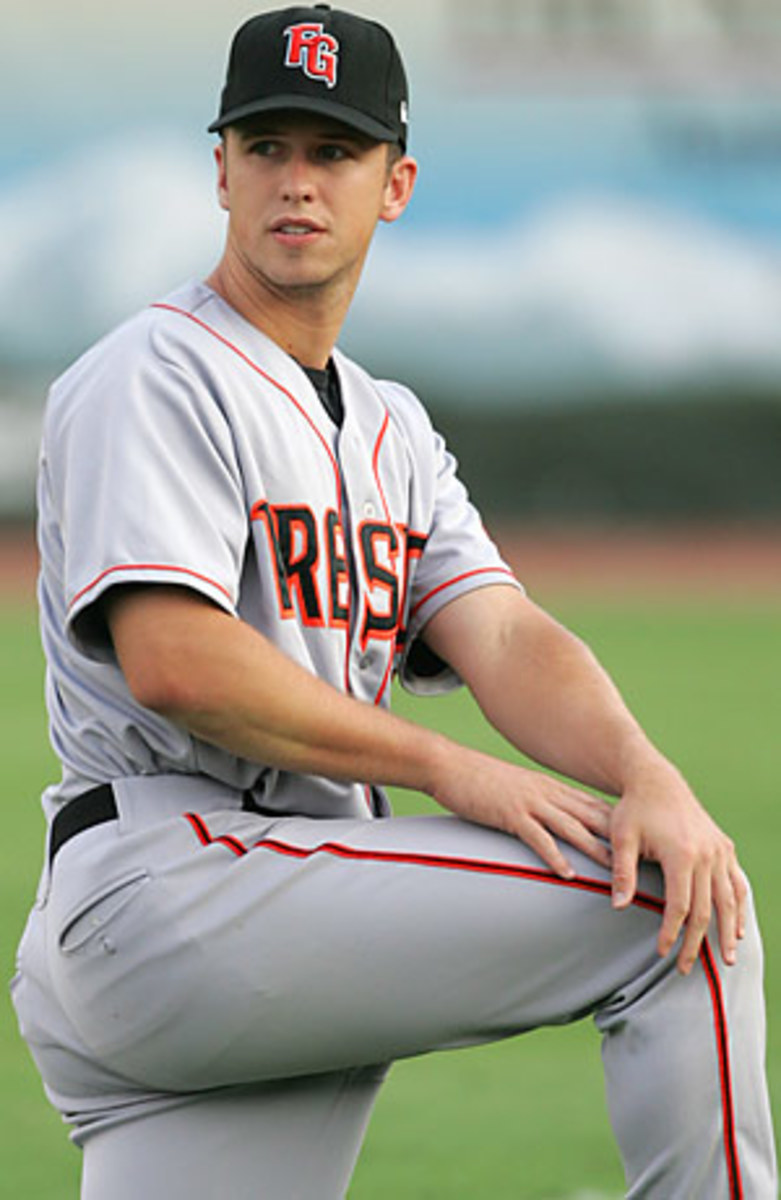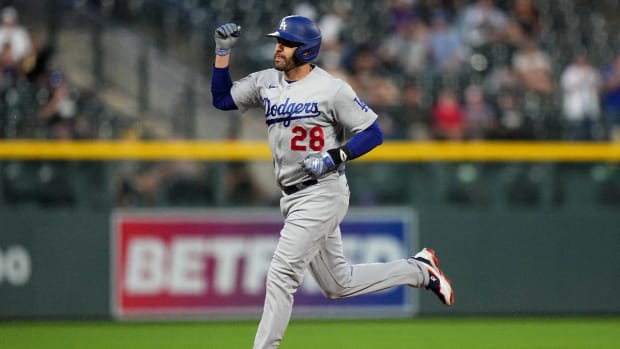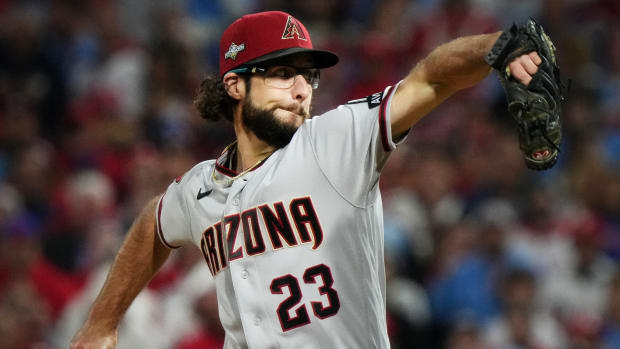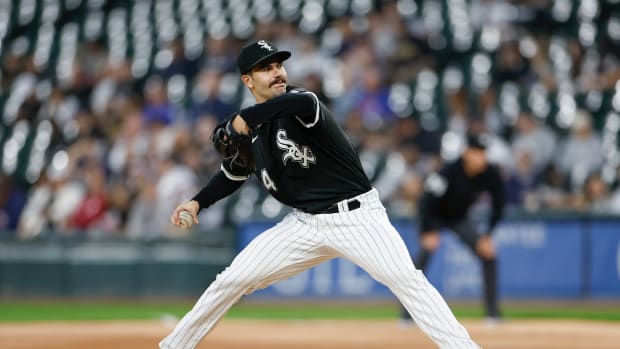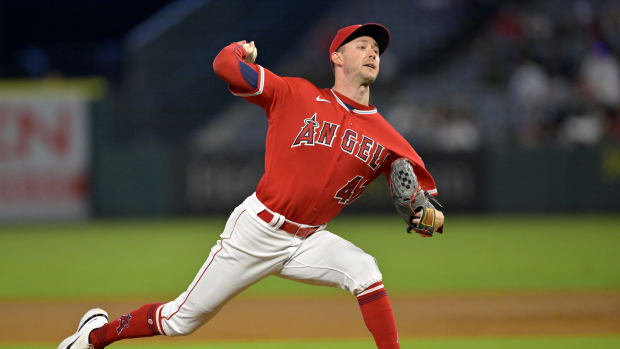Six September call-ups to watch
The majority of baseball's major league-ready, impact prospects already had trickled onto big leagues rosters before September arrived. Seven of the top 10 talents from Baseball America's preseason Top 100 Prospects list reached the majors earlier this season, while an eighth, Cameron Maybin, used up his rookie eligibility in a previous stint with the Marlins this year.
So the first wave of September promotions is filled more with role players than surefire stars. Look for other names to join this list once the minor league regular season and playoffs run their course. With that in mind, here's a look at six call-ups who are worth keeping an eye on right now.
No other September call-up comes close to matching the anticipation that Posey will bring to San Francisco. The best catching prospect in the minors has done everything expected of him in his pro debut and appears right on pace to be the Giants' everyday catcher in 2010. He'll also get a chance to contribute in a pennant race. With Bengie Molina hobbled with a quad injury, Posey immediately becomes the Giants' best option behind the plate. His bat is a little ahead of his glove, but on the offensively-challenged Giants, that's not a problem as long as he can catch Tim Lincecum's and Matt Cain's filthy stuff. Unlike most catchers, Posey is an exceptional athlete (he started out at Florida State as a shortstop and fired 94 mph fastballs as an occasional reliever). Posey hit .375/.428/.638 for Triple-A Fresno in August, reinforcing the belief that he's ready for a taste of the big leagues.
Flowers is not slated to get much playing time for the White Sox until they completely fall out of the playoff race. But the Braves' 2005 draft-and-follow will give a sneak peek as to why the White Sox expect him to be their everyday catcher in 2011. Acquired in the Javier Vazquez trade last winter, Flowers showed once again this year why he's one of the better catching prospects in the minors, mainly because of his bat. He has plus power from the right side and enough patience to get into hitter's counts where he can drive the ball. Behind the plate he's still a work in progress: He continues to struggle to block balls in the dirt and threw out only 27 of 93 base stealers between Double-A and Triple-A.
At first glance, Valdez's transaction history would make it appear that he's a minor league veteran getting a call-up as a reward for a solid Triple-A season. He's 25, older than most prospects, and after spending seven seasons with the Pirates (never advancing past high Class A), he came to Atlanta as a minor league free agent. But Valdez isn't just a minor league lifer. The right-hander has elite stuff, including a 94-95 mph fastball and a wipeout slider. With the Braves still in the pennant race, he could provide immediate help in the bullpen and should be a regular member of the 2010 relief corps.
The "other" outfield prospect the Indians acquired in last year's C.C. Sabathia trade, Brantley is a more well-rounded player than the better-known Matt LaPorta. While LaPorta's exceptional power gives him a standout tool, Brantley gets pigeonholed as a potential fourth outfielder. The son of former big leaguer Mickey Brantley, the younger Brantley rarely strikes out, runs well and knows how to put the bat on the ball. But he's adequate at best in center field and doesn't hit for the power that teams want in a left fielder -- his six home runs this season are a career high. If the Indians focus on what the 22-year-old left-handed hitter can do: get on base, steal bases (45 in 50 attempts) and run down balls in left field, he's a useful player, even if he doesn't have much star potential.
September will serve almost as a tryout camp for the Indians, as they audition the prospects they've acquired in the past year in trading a handful of veterans. Carrasco was once the Phillies' top pitching prospect, but his slow progress through the system led to some prospect fatigue with his old club. At his best, Carrasco has front-end-of-the-rotation stuff, but his tendency to give up big innings and his trouble refining his command has left some scouts wondering if he'll ever be more than a useful arm out of the bullpen. Carrasco's 91-94 mph fastball, plus changeup and average curveball, should be enough to get big league hitters out, but it often hasn't been enough to retire Triple-A hitters. Carrasco gave up five or more runs in more than a quarter of his starts for Lehigh Valley, and his 4.64 Triple-A ERA doesn't instill confidence that he's ready to finish off big leaguers. The 22-year-old's stuff is good enough to dictate patience, which is why Indians fans will get a glimpse of the future, even if it might not make for a pretty present.
When it comes to putting the bat on the ball, Thole may be the Mets' best hitting prospect, even though he's still an unknown to all but the most diligent prospect watchers. The lefty hitter was second in the Double-A Eastern League in batting (.328) at the time of his call-up and was one of the toughest hitters to strike out in the minors. So why isn't Thole more highly regarded? It all comes down to his swing and his work behind the plate. Thole is content to slap the ball the opposite way for singles and the occasional double. While that's a perfect approach for a speedy leadoff hitter, it's not something scouts expect to see from a slow catcher. Thole does not hit for power (one home run this year) and he's got work to do behind the plate. He stabs at pitches instead of receiving them smoothly, and he struggles to throw out runners. He's been catching full-time for just two years, so he can still make significant defensive improvement. Thole doesn't have All-Star potential, but as a lefty bat who can provide plenty of base hits, he has turned himself into an intriguing potential part-time catcher, especially if he gets better behind the plate.






























